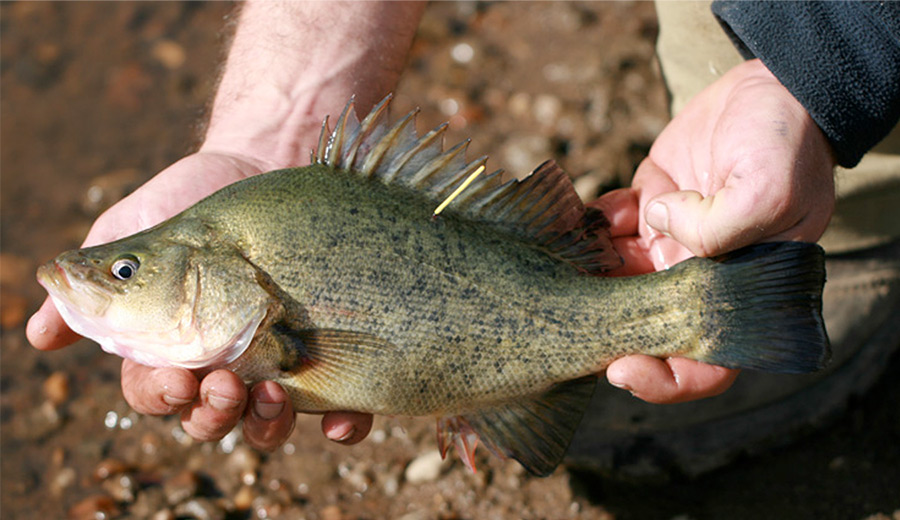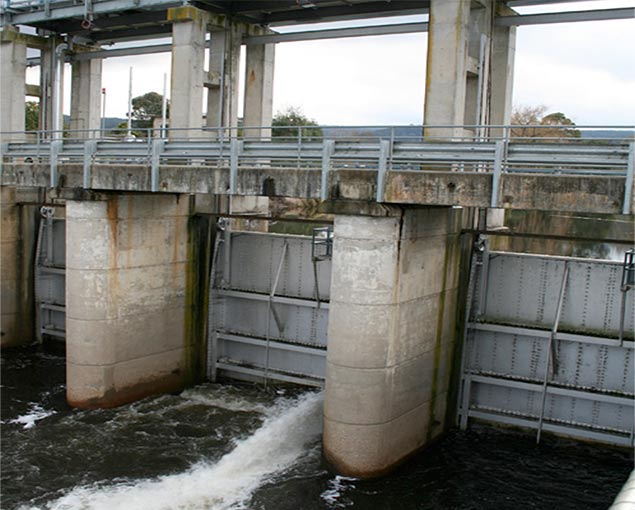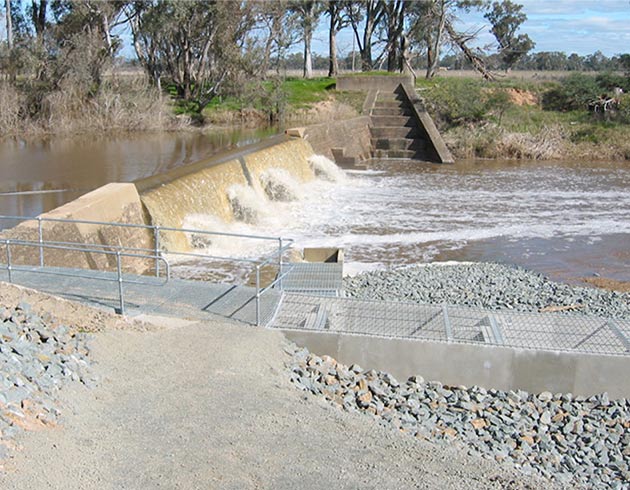
These adaptations have evolved over thousands of years with naturally changing river conditions and climate. Some fish migrate locally while others will travel a great distance between where they live and where they reproduce.
Of the 83 species of freshwater fish in south eastern Australia, over half migrate at least once as part of their life cycle. Golden perch have a recorded migration of up to 2,300 km – that's like swimming from Sydney to New Zealand!
Sixty six species of freshwater fish endemic to south eastern Australian migrate to some extent. Many of these species migrate upstream to spawn and fish larvae are then dispersed downstream.
 Undershot weir
Undershot weirEven mud crabs migrate! Once her eggs have been fertilised the female will migrate up to 50 km offshore to spawn.
Restricting natural migration patterns of fish through the construction of dams, flood levees, weirs and road crossings can have severe impacts on native fish populations. Even small structures such as low lying causeways with small changes in water level (10 cm drop) can block the passage of the less agile or energetic native fish.
Recent research[1] has highlighted that the large number of weirs on our rivers not only block upstream migration but also severely impact on the survival of fish in their larval stage.
 Overshot weir with vertical slot fishway to allow fish passage
Overshot weir with vertical slot fishway to allow fish passageStudies on two iconic species in the Murray Darling Basin (Murray cod and golden perch) indicate that up to 95 % of golden perch and 52 % of Murray cod larvae are killed when flowing through undershot weirs.
Undershot weirs release water from the bottom, the amount of water released is controlled by a sluice gate. It is believed that a combination of factors lead to such high mortality rates including stress, sudden changes in water pressure, shear stress and injury. The findings of this research have been presented to the authorities operating undershot weirs.
Further research is underway to determine appropriate migratory measures. This research will guide management to ensure long term sustainability of wild populations.
[1] Baumgartner, L.J., Reynoldson, N. and Gilligan, D.M., 2006. Mortality of larval Murray cod (Maccullochella peelii peelii) and golden perch (Macquaria ambigua) associated with passage through two types of low-head weirs. Marine & Freshwater Research, 57: 187-191.